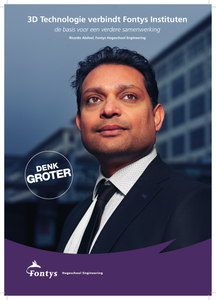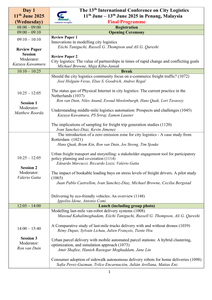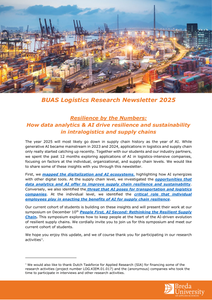This article delves into the acceptance of autonomous driving within society and its implications for the automotive insurance sector. The research encompasses two different studies conducted with meticulous analysis. The first study involves over 600 participants involved with the automotive industry who have not yet had the opportunity to experience autonomous driving technology. It primarily centers on the adaptation of insurance products to align with the imminent implementation of this technology. The second study is directed at individuals who have had the opportunity to test an autonomous driving platform first-hand. Specifically, it examines users’ experiences after conducting test drives on public roads using an autonomous research platform jointly developed by MAPFRE, Universidad Carlos III de Madrid, and Universidad Politécnica de Madrid. The study conducted demonstrates that the user acceptance of autonomous driving technology significantly increases after firsthand experience with a real autonomous car. This finding underscores the importance of bringing autonomous driving technology closer to end-users in order to improve societal perception. Furthermore, the results provide valuable insights for industry stakeholders seeking to navigate the market as autonomous driving technology slowly becomes an integral part of commercial vehicles. The findings reveal that a substantial majority (96% of the surveyed individuals) believe that autonomous vehicles will still require insurance. Additionally, 90% of respondents express the opinion that policies for autonomous vehicles should be as affordable or even cheaper than those for traditional vehicles. This suggests that people may not be fully aware of the significant costs associated with the systems enabling autonomous driving when considering their insurance needs, which puts the spotlight back on the importance of bringing this technology closer to the general public.
DOCUMENT

De auto is niet meer weg te denken in onze huidige westerse maatschappij en bezet een belangrijke plaats in zowel ons economische als sociale leven. Hoewel Nederland al een van de meest verkeersveilige landen ter wereld is, waren er toch nog 811 verkeersdoden in 2006. Als we ons echter realiseren dat dit slechts een kwart is van de ruim 3200 verkeersdoden in 1972, is sindsdien al veel bereikt. De Nederlandse overheid streeft naar een verdere reductie tot minder dat 580 verkeersdoden in 2020. De daarvoor noodzakelijke verbeterde verkeersveiligheid zal voor een groot deel moeten komen uit nieuwe voertuigtechnologie die ongevallen helpt voorkomen (actieve veiligheid) en de gevolgen ervan beperkt (passieve veiligheid). Een auto veilig door het hedendaagse verkeer loodsen is geen eenvoudige taak, zeker niet onder slechte weersomstandigheden en bij complexe of onoverzichtelijke verkeerssituaties. Het is dan ook niet verwonderlijk dat bij het overgrote deel van de verkeersongevallen de oorzaak, minstens ten dele, bij een menselijke fout ligt. Intelligente voertuigsystemen, die met behulp van aan het voertuig verbonden omgevingssensoren het verkeer rond het voertuig monitoren, kunnen de bestuurder assisteren. Als er zich geen bijzonderheden voordoen is de bestuurder het meest gebaat bij informatieve- en comfortverhogende systemen. Als er een gevaarlijke situatie dreigt te ontstaan, komen de veiligheidssystemen in beeld. Naarmate de kans op een ongeval toeneemt, lijkt een grotere mate van ondersteuning (van waarschuwen, via assisteren tot interveniëren) gewenst. Vanwege hun veiligheidskritische karakter moeten actieve veiligheidssystemen voldoen aan hoge eisen ten aanzien van prestatie (hoge nauwkeurigheid), robuustheid (weersomstandigheden en wegcondities) en betrouwbaarheid. Hier liggen enorme uitdagingen in zowel het ontwerp als de evaluatie van dergelijke systemen waaraan het lectoraat Automotive control van Fontys Hogescholen door praktijkgericht onderzoek en vraaggestuurd onderwijs wil bijdragen.
DOCUMENT

1e alinea column: Ik wil een paar dingen kwijt over singularity en de hele horde van buitengewoon slimme mensen die daar vorm aan geven. Aanleiding hiervoor is de speech van Peter Diamandis, cofounder en chairman of the Singularty University, Nasa Research Park, Silicon Valley, die hij vorige week in Carré gaf. Carré zat vol.
LINK
De wereld verandert in een razend tempo. Technologische ontwikkelingen hebben een grote impact op mens en maatschappij. Het verandert niet alleen onze manier van werken maar ook onze manier van leven. Steeds meer disciplines hanteren technologie als basis om in een professionele omgeving het werk kwalitatief beter, sneller en effi ciënter uit te voeren. Digitalisering, globalisering en informatisering maakt het mogelijk om plaats- en tijdonafhankelijk te studeren en te werken. Fontys Hogescholen speelt hier op in door tal van initiatieven te ondersteunen die gericht zijn op het volgen van deze en opkomende trends rondom technologische ontwikkelingen en de impact voor het onderwijs. Met het Fontys Objexlab zetten we deze beweging door. Opkomende technologieën zoals 3D printing en Robotica maken we graag toegankelijk voor collega’s. Andere instituten kunnen hiervan gebruik maken zodat zij hun onderwijs nog aantrekkelijker en actueler kunnen maken. In het najaar van 2014 zijn we gestart met het samenbrengen van collega’s van verschillende instituten en opleidingen om enerzijds deze nieuwe technologieen te leren en te ervaren, om daarna een stap te maken in het initiëren van ideeën en plannen om met deze kennis en vaardigheden onderwijsvernieuwing gezamenlijk vorm- en inhoud te geven.
MULTIFILE

This study presents a detailed buckling analysis of laminated composites reinforced by multi-walled carbon nanotube (MWCNT) inclusions using a multiscale computational framework. It combines multiple analytical and computational techniques to assess the performance of these composites under varying hygro-thermo-mechanical conditions. The model incorporates nanoscopic MWCNT characteristics, estimates orthotropic constants, and investigates the impact of various factors on the critical buckling load of MWCNT-based laminates. Comparison with existing data validates our approach, marking the first usage of the multiscale finite element method for predicting the buckling behaviour of MWCNT-reinforced laminates. This research offers valuable design insights for various industries including aerospace and automotive.
DOCUMENT

Purpose This paper describes the result of an empirical study into the critical success factors for implementing an intellectual capital valuation method, the KPMG Value Explorer®. Methodology/Approach For this study the design approach was used as research methodology. Findings The research shows the strengths and weaknesses of the method and identifies four general critical success factors for the implementation of intellectual capital valuation and measurement tools.
DOCUMENT

Environmental concerns and urbanization pressures are driving demand for more efficient reverse logistics in city environments, where space constraints and dense populations create unique challenges. Polyurethanes (PU), used widely in insulation, electronics, and automotive industries, are integral to circular supply chain discussions due to their low recycling rates. This study emphasizes the challenges of urban reverse logistics for the disposal and collection of refrigerators in countries with different waste management systems. In the paper qualitative and quantitative methods have been applied. Based on the research carried out, it was shown how complex the reverse logistics process is in the city concerning waste such as fridges. It is influenced by, among other things, regulations at EU and national level, cooperation between stakeholders, consumer awareness and education, and real-time access to information on waste.
DOCUMENT

Particle image velocimetry has been widely used in various sectors from the automotive to aviation, research, and development, energy, medical, turbines, reactors, electronics, education, refrigeration for flow characterization and investigation. In this study, articles examined in open literature containing the particle image velocimetry techniques are reviewed in terms of components, lasers, cameras, lenses, tracers, computers, synchronizers, and seeders. The results of the evaluation are categorized and explained within the tables and figures. It is anticipated that this paper will be a starting point for researchers willing to study in this area and industrial companies willing to include PIV experimenting in their portfolios. In addition, the study shows in detail the advantages and disadvantages of past and current technologies, which technologies in existing PIV laboratories can be renewed, and which components are used in the PIV laboratories to be installed.
DOCUMENT

We review the current body of academic literature concerning gamification of production and logistics. The findings indicate that production execution and control has been addressed most often in the current body of literature, which consists mostly of design research. Objectives and goals, points, achievements, multimedial feedback, metaphorical/fictional representations, and levels and progress are currently most often employed gamification affordances on this field. The research has focused on examining or considering motivation, enjoyment and flow as the main psychological outcomes of gamification in the given context, while individual performance and efficiency are the most commonly examined or suggested behavioral/organizational impacts. Future studies should employ more rigorous study designs and firmly ground the discussions in organization theory.
LINK
DOCUMENT
